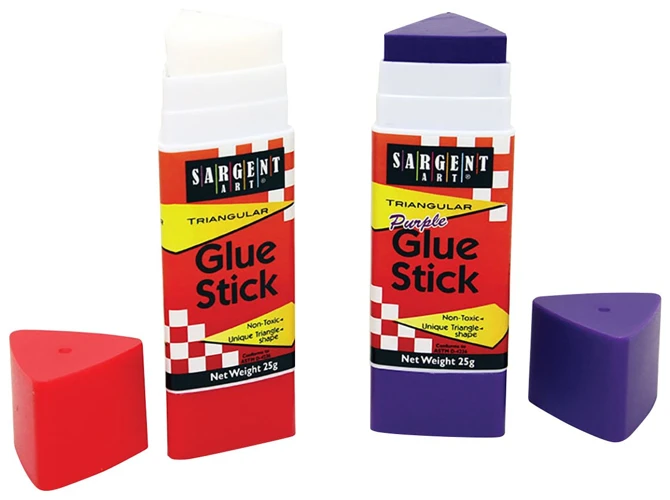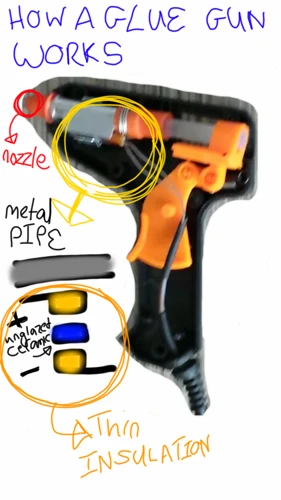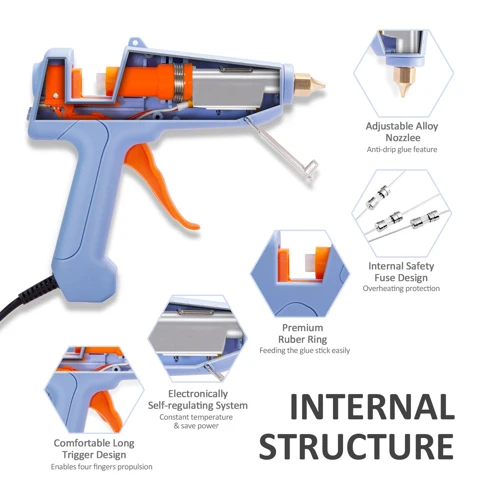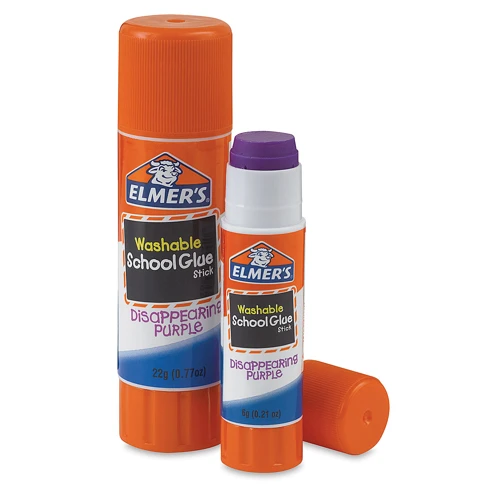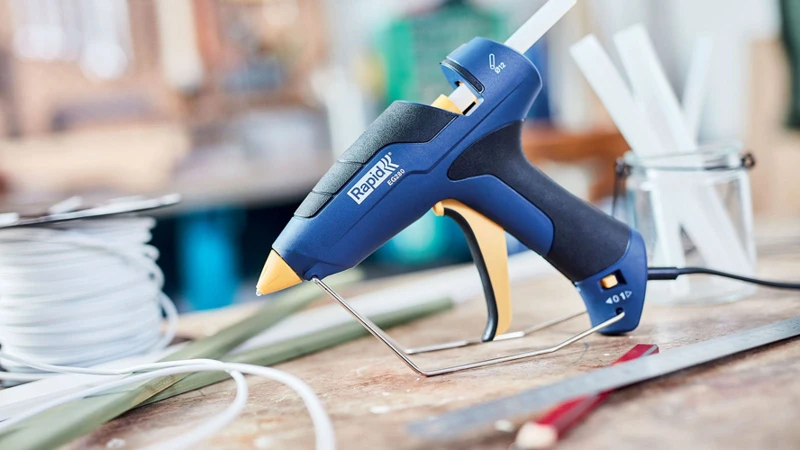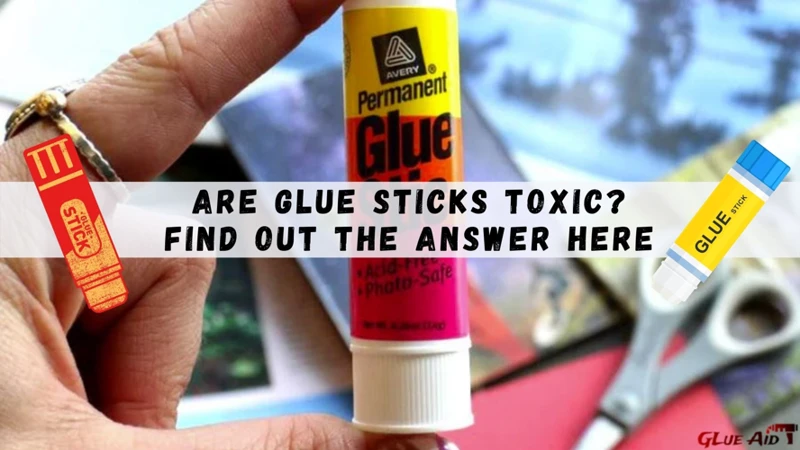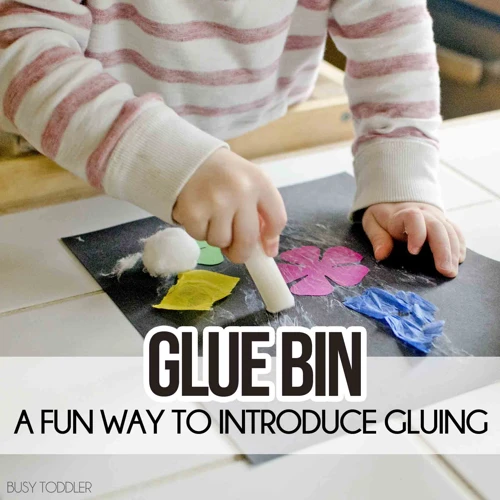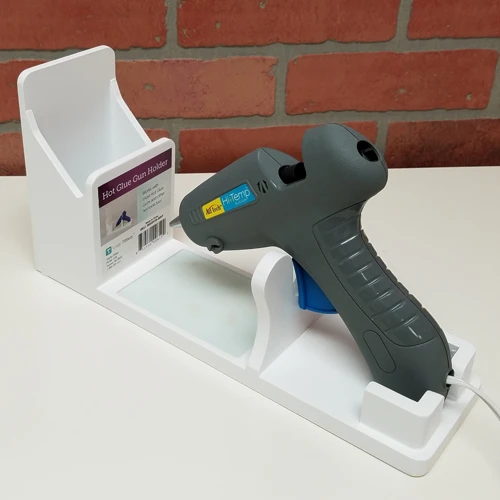Have you ever wondered what shape a glue stick is? Despite being such a common household item, we often overlook the curious solid structure of glue sticks. They have a distinct cylindrical shape and a smooth exterior, but what lies beneath the surface? In this article, we will explore the solid structure of glue sticks, how they work, the different types that are available, and some tips for using and storing them. Get ready to dive into the world of adhesive materials and uncover the secrets of this seemingly simple yet remarkable invention.
The Shape of a Glue Stick
Have you ever wondered about the shape of a glue stick and why it’s designed that way? When it comes to adhesive products, the shape and size can make a big difference in how it’s used. In this section, we’ll explore the shape of a glue stick and what makes it unique. We’ll also discuss how it works, the solid structure, and different types of glue sticks available. If you’re interested in learning more about glue sticks, keep reading! And if you’re curious about whether glue sticks are waterproof or not, check out this article for more information.
What is a Glue Stick?
A glue stick is a solid adhesive that comes in a cylinder-shaped container and is used to bond different materials together. The adhesive substance is applied by twisting the container and gliding the glue stick over the surface you want to bond. The adhesive material is usually a mixture of synthetic polymers, resins, and waxes.
Glue sticks were invented in the 1960s to replace liquid glues, which were messy and difficult to work with. Since then, glue sticks have become one of the most popular adhesive options for a wide range of applications.
Glue sticks have several advantages over liquid glues. First, they are less messy and easier to use. Second, they do not require any specialized skills or equipment to apply. Third, they can be used on a wide range of surfaces, including paper, cardboard, fabric, and lightweight materials.
Glue sticks have become a staple in many households and workplaces, and are commonly used for arts and crafts, school projects, and office applications. They are available in different sizes, but the most common size is a 0.28 ounce cylinder.
Glue sticks are typically made up of the following components:
| Component | Function |
|---|---|
| Synthetic polymers | Provides the adhesive properties of the glue. |
| Resins | Helps the glue bind to the surface it is applied to. |
| Waxes | Helps the glue stick to surfaces and improves its texture. |
Glue sticks are a convenient, easy-to-use alternative to liquid glues, and are suitable for a wide range of household, office, and school applications.
Shape and Appearance
The shape and appearance of a glue stick is a key characteristic that distinguishes it from other types of adhesives. Glue sticks typically have a cylindrical shape, similar to that of a tube of lip balm or deodorant. They come in various sizes, with the most common being 8 grams, 15 grams, and 40 grams. The size of the glue stick determines how much adhesive is available for use.
Glue sticks are made of a solid, waxy material that is either transparent or opaque, depending on the brand. Some glue sticks have a smooth, glossy appearance while others have a slightly bumpy texture. The wax-like material is applied onto surfaces by twisting the base of the glue stick, which pushes the adhesive out through the top.
The color of the glue stick can vary depending on the brand and type of adhesive. Standard glue sticks are typically opaque white or clear, while colored glue sticks are available in a variety of hues, such as red, blue, and green. Some glue sticks even contain glitter or metallic flakes for added decoration. Scented glue sticks are also available, with popular fragrances including fruit, floral, and candy scents.
Internal link: How big is a glue stick
One of the benefits of a cylindrical shape is that the glue stick can be easily stored in a pencil case, desk drawer, or backpack without taking up too much space. Additionally, the solid material inside the glue stick is less messy than liquid adhesives. There is no need to worry about dripping or spilling glue, which can be a common problem with liquid adhesives.
However, one drawback of glue sticks is that they may not be suitable for use on certain materials like metal, glass, or fabrics. It is important to check the label of the glue stick to ensure that it is appropriate for the material you wish to attach. Some glue sticks are specifically designed for use on certain materials, so be sure to choose the right kind for your project.
The shape and appearance of glue sticks make them a convenient and practical adhesive option for a variety of everyday tasks.
How a Glue Stick Works
Understanding the process behind a glue stick might seem like a mystery to many. However, this essential tool is actually quite straightforward to use. When you rub a glue stick on paper, it can be perplexing how it attaches so seamlessly. In this section, we will investigate how a glue stick works and explore its active ingredients that make it so effective. Additionally, we will provide tips for using a glue stick effectively and explain some of its advantages and disadvantages. Keep reading to learn more about this handy adhesive tool.
For more information on different types of glues, check out our article on what is in glue.
The Active Ingredient
The active ingredient in a glue stick is typically a synthetic polymer called PVP or Polyvinylpyrrolidone. This polymer is a water-soluble ingredient that provides the adhesive properties of the glue stick. The PVP is usually mixed with a wetting agent, such as water, glycerin, or propylene glycol, to help the glue spread evenly and make it easier to apply to surfaces.
PVP is a non-toxic ingredient that makes glue sticks safe for use in classrooms, offices, and homes. This ingredient is also commonly used in various pharmaceutical and cosmetic products because of its non-allergenic and non-irritating properties.
When a glue stick is applied to a surface, the PVP creates a temporary bond as it dries. The bond formed is not as strong as that of other adhesives, such as wood glue or epoxy, but it is strong enough to hold paper and other lightweight objects together.
Fun fact: PVP is also a common ingredient in hair gels, where it is used for its ability to create a flexible hold.
It is worth noting that different brands may have slightly different active ingredients. Some glue sticks may also contain other additives, such as preservatives or stabilizers, to help improve their shelf life or performance.
Glue in is another term for adhesive, but it is typically used to refer to hair extensions and wigs. The active ingredient in hair glue is usually a type of acrylic adhesive that forms a strong and long-lasting bond. This type of glue is not recommended for use on skin or other surfaces.
In the next section, we will discuss how to properly use a glue stick to achieve the best results.
Using a Glue Stick
When using a glue stick, it’s important to consider a few key factors to ensure the best possible results. Follow these steps to use a glue stick effectively:
- Prepare the surface: Make sure the surfaces you plan to glue together are clean and dry. Moisture or dirt can interfere with the glue’s ability to adhere properly.
- Apply the glue: Twist the bottom of the glue stick to raise the glue up to the top. Apply the glue to one surface in a thin, even layer.
- Join the surfaces: Press the two surfaces together, being careful to align them properly.
- Allow drying time: Depending on the type of glue, it may take anywhere from a few seconds to several minutes for the bond to set. It’s important to clamp or hold the surfaces together until the glue is completely dry to ensure a strong bond.
- Clean up: Glue sticks are typically easy to clean up with water, so if any glue gets on your skin or clothes, simply wash it off with soap and water.
Remember, different types of glue sticks have different drying times and levels of strength, so be sure to choose the right one for your project. Additionally, some types of materials may require a specific type of glue. For example, to glue wood, you should use wood glue, which has a stronger hold and is waterproof when dry (source). Skin glue, on the other hand, is a medical adhesive used to close wounds and is made from a type of cyanoacrylate (source). Jewelry glue and glass glue have specific drying times and requirements as well (source) (source). Finally, nerve glue and mulch glue refer to types of cells and materials used in medical and gardening contexts, respectively (source) (source).
The Solid Structure of a Glue Stick
The curious case of the glue stick’s solid structure has puzzled many. How can something so solid become so sticky when rubbed onto a surface? In this section, we’ll lift the veil on the composition and manufacturing process of glue sticks, as well as why a solid shape is necessary for their function. So, let’s dive in and explore how this cylindrical piece of adhesive magic works.
Composition
The composition of a glue stick plays a crucial role in its effectiveness and reliability. It determines the adhesion strength, drying time, and overall quality of the glue stick. The basic components of a standard glue stick include:
| Component | Function |
|---|---|
| Wax | Makes the glue stick solid |
| Resins | Provide adhesion to materials |
| Oil | Enhances spreadability and smoothness |
In addition to the standard components, there are variations in the composition of glue sticks depending on their type. For example, washable glue sticks may contain polyvinyl acetate (PVA) as their primary component, which allows for easy removal of the glue from fabrics and surfaces. Colored and scented glue sticks may contain additional ingredients, such as colorants and fragrances, to enhance their aesthetic appeal.
It’s important to note that some glue sticks may contain harmful ingredients, such as formaldehyde and toluene. Therefore, it’s important to check the labeling of the glue stick and ensure that it’s safe to use, particularly in environments such as schools where children may be using them.
Overall, the composition of a glue stick is a critical aspect in determining its effectiveness and safety for use. It’s essential to choose a glue stick that has a composition suitable for your purpose and that does not contain any harmful components.
Manufacturing Process
To create a glue stick, the manufacturing process involves several steps. Here are the key steps:
Step 1: Mixing the Ingredients
The first step in manufacturing a glue stick involves mixing all of the ingredients together. This typically includes a combination of wax, resin, and other additives depending on the specific formula. These ingredients are melted together in a large mixing vat until they become a uniform liquid.
Step 2: Pouring the Mixture
Once the ingredients are thoroughly mixed, the liquid glue is poured into tube-shaped molds that are made of heat-resistant plastic. The molds are designed to create a glue stick of a specific size and shape. They are typically lined up on a conveyor belt, allowing a large number of glue sticks to be made simultaneously.
Step 3: Cooling and Solidifying
After the glue is poured into the molds, they are immediately cooled to help the glue solidify into its solid form. Cooling is required to prevent any cracks or deformations from forming as the glue cools.
Step 4: Removing the Glue Sticks
Once the glue sticks have solidified and cooled, they are removed from their molds. The sticks are then inspected for any defects or imperfections before being packaged and shipped off to retailers.
The manufacturing process of glue sticks is relatively simple and efficient. By using a consistent formula and high-quality ingredients, manufacturers are able to create glue sticks that have a consistent shape and performance.
Why a Solid Shape?
One might wonder, why does a glue stick need to have a solid shape? Why not just make it into a liquid or gel form? The answer lies in the convenience and ease of use that a solid shape provides.
Firstly, the solid shape of a glue stick makes it mess-free and easy to apply. Unlike liquid glue, there is no need for a brush or applicator, and the user can simply twist the stick to dispense the exact amount of glue needed.
Additionally, a solid glue stick is easier to store and transport than liquid glue, which can spill or leak. The solid shape ensures that the glue does not dry out or become unusable over time, allowing for a longer shelf life.
The solid shape of a glue stick makes it appropriate for use in classroom settings and other public places where liquid glues might cause a mess or pose a safety hazard.
Lastly, the solid shape of a glue stick also offers a stronger bond than some liquid glues, as it is able to dry quickly and create a strong hold on the surface to which it is applied.
Below is a table summarizing the advantages of a solid glue stick:
| Advantages of a Solid Glue Stick |
|---|
| Mess-free and easy to apply |
| Easier to store and transport |
| Appropriate for use in public places |
| Creates a stronger bond |
In short, the solid shape of a glue stick offers many advantages over liquid or gel forms. Its convenience, ease of use, and strong bond make it a popular choice for various crafts and projects.
Types of Glue Sticks
As you delve deeper into the world of glue sticks, you might be surprised to discover that there are actually different types available on the market. From standard glue sticks to washable options, colored and scented varieties, these choices can be overwhelming. Each type of glue stick is unique, with its own sets of benefits and drawbacks. To help you navigate through the options, let’s take a closer look at the different types of glue sticks available.
Standard Glue Sticks
One of the most common types of glue stick is the standard glue stick. These sticks are widely available and can be used for a variety of tasks at home, school, or in the office.
Composition: Standard glue sticks are generally composed of a combination of synthetic polymers, waxes, and other additives such as plasticizers, antioxidants, and stabilizers. These components work together to create a solid adhesive that can be easily applied and dries quickly.
Appearance: Standard glue sticks typically come in a transparent or semi-transparent form and have a smooth, solid appearance. They are often cylindrical in shape and can be easily inserted into a glue gun for use.
Here are some of the main advantages of using standard glue sticks:
– Easy to Use: Standard glue sticks are incredibly easy to use and require no special skills or knowledge to apply. Simply insert the glue stick into a glue gun and apply the adhesive to the surface you wish to bond.
– Quick Drying: Standard glue sticks typically dry within a few seconds, making them ideal for projects that require a fast bond.
– Clean and Safe: Unlike other adhesives such as liquid glue or tape, standard glue sticks do not create a mess and are completely safe for children to use.
Despite their many advantages, standard glue sticks do have a few potential disadvantages:
– Not Suitable for All Materials: Standard glue sticks are not suitable for use on certain materials such as fabrics, leather, or metal. For these materials, a different type of glue may be required.
– Potentially Weak Bond: In some situations, a standard glue stick may not provide a strong enough bond. For more heavy-duty projects, it may be necessary to use a stronger adhesive.
Standard glue sticks are a versatile and convenient adhesive solution that can be used for a variety of tasks.
Colored and Scented Glue Sticks
Glue sticks, which serve as a convenient and mess-free adhesive option, aren’t just limited to the traditional clear formulation. In recent years, colored and scented glue sticks have become increasingly popular, especially among children.
Colored Glue Sticks: Like traditional glue sticks, colored glue sticks retain their solid form and offer the same level of adhesion. The primary difference between standard and colored glue sticks is their appearance. Colored glue sticks, as the name implies, are available in a wide range of hues and shades, which makes them an excellent option for arts and crafts projects. These glue sticks can also be used to add decorative elements to a project or disguise glue lines.
Scented Glue Sticks: Scented glue sticks, as the name suggests, are available in a range of different fragrances. The addition of scent is a unique feature that can provide a sensory experience for the user. Popular scents for glue sticks include cinnamon, fruit, and floral fragrances. Scented glue sticks, just like their non-scented counterparts, offer the same level of adhesion and are perfect for kids’ crafts and school projects.
| Type | Properties |
|---|---|
| Colored Glue Sticks | Available in a range of hues and shades for decorative use. |
| Scented Glue Sticks | Available in a range of fragrances to provide a sensory experience for the user. |
It’s important to note that while colored and scented glue sticks are an exciting and fun option for kids, they may not be the best choice for more professional or serious projects. The added dye or scent can alter the color or scent of the project material, which may not be ideal.
Colored and scented glue sticks are a great way to add a touch of creativity and fun to any project, and their solid structure and convenient twist-up design make them a practical option for both kids and adults.
Washable Glue Sticks
Washable glue sticks are a great option for children and artists who tend to make a mess or accidentally get glue on their clothing or other surfaces. These glue sticks are specially formulated to be removed easily with water and do not leave behind any stubborn residue.
Composition: Washable glue sticks are made from the same ingredients as standard glue sticks, but with the addition of a water-soluble polymer. This polymer allows the glue to be washed away with water, without leaving any stains or marks.
Advantages: The main advantage of washable glue sticks is their ability to be easily washed away with water. This makes them a great choice for use at home or in school, where messes are more likely to occur. Washable glue sticks also do not contain any toxic ingredients, making them safe for use by children.
Disadvantages: While washable glue sticks are great for easy cleanup, they may not be as strong or long-lasting as some other types of glue. They may also not work as well on certain materials, such as fabric or paper with a glossy finish.
To help you decide if washable glue sticks are the right choice for your needs, here is a quick comparison table:
| Washable Glue Sticks | Standard Glue Sticks | |
|---|---|---|
| Composition | Contains a water-soluble polymer | No water-soluble polymers |
| Advantages | Easy to wash away, non-toxic | Strong, long-lasting hold |
| Disadvantages | May not be as strong or long-lasting | May leave residue, may contain toxic ingredients |
Washable glue sticks can be a great option for certain situations, such as crafting with children or creating temporary displays. However, for more permanent projects, a standard glue stick may be a better choice.
Advantages of Using a Glue Stick
Glue sticks are a popular and convenient way to stick paper, cardboard, and other materials together. There are several benefits to using glue sticks that make them a top choice for many people.
Mess-Free Application: Unlike liquid glue, glue sticks are clean and easy to apply without creating a mess. Unlike tape, it doesn’t get tangled, folded, or leave any residue.
Dries Clear: Glue sticks dry clear, which makes them perfect for crafts, scrapbooking, and other artistic projects. It doesn’t ruin artwork with visible glue marks or leave an ugly stain that can be difficult to remove.
Convenient: Glue sticks are very convenient for on-the-go use and can be easily carried in a bag or purse. It can be used for fixing ripped pages of a book, attaching photos to albums or sticking labels.
Non-Toxic: Most glue sticks are non-toxic, making it a good option for children to use. It is safe and easy to clean, reducing the need for harsh chemicals to get rid of the glue.
No Clamping or Drying Time Required: Glue sticks do not require clamping or drying time. Simply apply the glue stick and press the materials together for a secure bond.
Budget-Friendly: Glue sticks are budget-friendly compared to other types of adhesive products. They are available in different sizes and shapes to fit every budget and need.
Glue sticks are an excellent adhesive solution for all kinds of crafting and DIY projects due to its convenience, affordability, and clean application.
Disadvantages of Using a Glue Stick
While glue sticks have many advantages, there are also some disadvantages to using them. One of the most common problems with glue sticks is that they can sometimes lose their adhesive properties over time. This can be especially problematic if you’re using the glue stick for a project that requires a long-lasting bond.
Another issue with glue sticks is that they may not be suitable for use on all materials. Heavy or thick paper stocks, fabrics, and plastics can be challenging to bond with a glue stick and may require a stronger adhesive. Additionally, some glue sticks may not work well in high temperatures and humid conditions, making them unsuitable for projects that will be exposed to these conditions.
Glue sticks may not be as strong as liquid glue, and the bond they create may not hold up over time. This is because glue sticks are typically made with less adhesive than liquid glues, which can cause the bond to weaken over time. For critical projects or long-term use, it might be better to use a different type of adhesive.
Finally, one common issue people have with glue sticks is that they can leave a messy residue behind. This residue is particularly visible on transparent materials like glass or acrylic, making it difficult to conceal. It can also be challenging to remove, and may even require the use of harsh chemicals.
While glue sticks are inexpensive, convenient, and easy to use, they may not be the best option for all types of projects. Consider the material you’re working with, the longevity of your project, and the environment in which it will be used before deciding whether or not to use a glue stick.
Tips for Using a Glue Stick
When using a glue stick, it’s important to follow a few tips to ensure that you get the best results. Here are some helpful tips for using a glue stick effectively:
1. Choose the right type of glue stick: There are different types of glue sticks available on the market, and not all of them are suitable for all types of projects. For example, if you are working on a project that involves paper, cardboard or foam, a standard glue stick should work fine. But for more heavy-duty projects that involve materials like metal or plastic, you’ll need a stronger adhesive.
2. Prepare the surface: Before applying the glue stick, make sure the surface is clean and dry. Any dirt or moisture on the surface can interfere with the adhesive and reduce its effectiveness.
3. Apply the glue evenly: Apply the glue stick evenly on the surface of the material. It’s important to distribute the glue evenly to ensure that the entire surface is covered and well bonded.
4. Do not use too much glue: Using too much glue can make your project messy and cause the material to wrinkle or buckle. A thin, even layer is usually enough to secure the material in place.
5. Allow the glue to dry: After applying the glue, it’s important to let it dry completely before moving on to the next step. Typically, glue sticks take a few minutes to dry, but you can speed up the process by using a heat gun or hair dryer.
6. Clean up excess glue: If you accidentally apply too much glue or it spills over onto the surrounding area, use a damp cloth or sponge to clean up the excess glue before it dries.
By following these tips, you can ensure that your glue stick projects are a success and that your materials remain securely bonded.
How to Store Glue Sticks
Storing glue sticks properly is crucial to maintain their longevity and effectiveness. Firstly, ensure the glue stick cap is tightly closed after each use to prevent air from drying out the glue. Leaving the cap open allows excess air to enter the container and dry out the glue, making it less effective over time.
Secondly, store glue sticks in a cool and dry place. Heat and humidity can cause the glue stick to become tacky and sticky, making it difficult to apply smoothly. Ideally, the temperature should be between 50-70°F (10-21°C) and humidity should be between 30-50%.
Thirdly, store glue sticks vertically with the cap facing downwards. This helps the glue to distribute evenly throughout the container and makes it easier to apply to the surface.
Fourthly, avoid storing glue sticks near direct sunlight or heat sources. Direct sunlight can cause the glue stick to melt, while heat sources can cause the glue to become too warm and tacky. It’s best to store glue sticks in a drawer or closet away from any direct sources of heat or light.
Lastly, check the expiration date on the glue stick before storing it. Most glue sticks have a shelf life of 1-2 years, so if the glue stick is past its expiration date, it may not be as effective or may not work at all.
By following these simple guidelines, you can ensure that your glue sticks stay in good condition and remain effective for all your crafting and school project needs.
FAQs
As with any commonly used product, questions may arise about glue sticks. In this section, we’ve gathered some of the most frequently asked questions to help clear up any confusion. From materials that can be used with glue sticks to how long they last, we’ve got you covered with the following FAQs.
What should I do if my glue stick gets stuck?
It can be frustrating when a glue stick gets stuck, but don’t worry, it’s not the end of the world. Here are some steps you can take to fix it:
- Don’t Panic: the first step is to stay calm and collected. Getting anxious will only make the situation worse
- Try to twist: if the glue stick is stuck because it’s too low, try to twist it gently. This can help to loosen the glue and make it easier to move
- Warm it up: warming up the glue stick, by holding it in your hands or running it under warm water, can help to melt the glue and make it easier to move
- Apply some force: if the glue stick is still stuck, you may need to apply some force. Gently push or pull the glue stick to see if it will budge
- Use pliers: if you can’t remove the glue stick with your hands, use pliers. However, be careful not to crush or damage the glue stick while doing so
- Prevent it from happening: to prevent a glue stick from getting stuck again in the future, make sure to turn the dial at the bottom of the container all the way up before replacing the cap
Remember, it’s always better to be safe than sorry. If you still can’t remove the glue stick, don’t hesitate to seek help from a professional.
Can I use a glue stick on any material?
One of the most common questions asked about glue sticks is whether they can be used on any material. While glue sticks are a versatile adhesive option, they may not be suitable for use on all types of materials. Here are some guidelines to help you determine whether a glue stick is a suitable adhesive for your project.
Materials that Work Well with Glue Sticks:
- Paper: Glue sticks work exceptionally well on paper. They provide a secure hold and don’t wrinkle or warp the paper like liquid glues often do.
- Cardboard: The texture of cardboard makes it an ideal material for glue sticks. The adhesive easily bonds with the fibers and creates a strong hold.
- Foam Board: Foam boards can also be securely bonded with glue sticks. They provide a clean and smooth finish without any wrinkles or bumps.
- Fabric: Glue sticks can be used on some types of fabric, such as felt and cotton. However, it may not be the best option for heavy fabrics or items that need to be laundered frequently.
- Photos: Glue sticks are a popular choice for scrapbooking and photo albums as they don’t damage the photos and provide a strong hold.
Materials that May Not Work Well with Glue Sticks:
- Metal: Glue sticks may not be suitable for use with metal as they don’t create a strong enough bond to hold the weight of the metal.
- Plastic: Depending on the type of plastic, glue sticks may or may not adhere properly. Some plastics such as PVC, polyethylene and polypropylene do not bond well with the adhesive in glue sticks.
- Glass: Glue sticks will not work on glass as they don’t bond well to smooth surfaces. A liquid adhesive such as super glue may be a better option for bonding glass.
- Wood: While glue sticks can bond with wood, it may not be the best option for long-term projects or heavy-duty items.
- Metallic or glossy finishes: Glue sticks may not adhere properly to surfaces with metallic or glossy finishes. In such cases, a liquid adhesive or double-sided tape may be a better option.
It is always best to test a small area first when using a glue stick on an unfamiliar material. This way, you can ensure that the adhesive will provide a strong and secure hold. If the glue stick doesn’t work, you can always consider alternative adhesive options that are better suited for the job.
How long does a glue stick last?
One of the most commonly asked questions about glue sticks is how long they last. The answer to this question depends on several factors, including the frequency of use and the size of the glue stick. Here are some general guidelines to follow:
- Frequency of use: If you use your glue stick regularly, it will last for a shorter period of time. On the other hand, if you only use it occasionally, it can last for months or even years.
- Size of the glue stick: Obviously, a larger glue stick will last longer than a smaller one. If you’re using a small glue stick for a large project, you may need to replace it more frequently.
- Type of glue stick: Different types of glue sticks have different lifespans. For example, some washable glue sticks may not last as long as standard ones.
In general, a standard glue stick can last anywhere from a few weeks to several months, depending on how frequently it is used. It’s always a good idea to keep a spare glue stick on hand so that you don’t run out in the middle of a project.
If you notice that your glue stick is becoming dry or clumpy, it’s time to replace it. Continued use of a glue stick that is past its expiration date can lead to messy and ineffective results. So, to ensure that your glue stick works well every time you use it, pay attention to its lifespan and replace it when necessary.
Conclusion
In conclusion, understanding the solid structure of a glue stick is essential to know how it works and how to use it properly. The shape and appearance of a glue stick are simple but effective, with a cylindrical shape and a twist-up mechanism that allows for easy use.
Glue sticks contain an active ingredient called PVP or PVA, which creates a strong bond between materials, and they come in different sizes and types to accommodate different needs.
The composition of a glue stick is a mix of wax, resin, and oil-based polymers that provide stability and solidness to the stick. The manufacturing process involves melting the ingredients together and shaping them into the stick’s form, which explains why the stick’s shape is solid rather than liquid.
Using a glue stick has numerous advantages, such as ease of use, mess-free application, and portability. Still, there are also some disadvantages, such as weak bonding strength and unsuitable for specific tasks.
When storing glue sticks, it is essential to keep them in a cool and dry place to prevent them from drying out or losing their bonding strength. If a glue stick gets stuck, you can try running it under warm water to loosen it up. Glue sticks can be used on most materials but are not ideal for use on absorbent surfaces such as paper.
Overall, glue sticks are an excellent tool to have in any home or workspace, regardless of one’s creative abilities or crafting skills. With some knowledge of how they work and how to use them, you can easily achieve a clean and strong bond between any materials. So, next time you need to glue something, give your glue stick a try and see the magical effect!
Frequently Asked Questions
What is the best way to remove a glue stick stain?
To remove glue stick stains, you can use a solution of white vinegar and warm water. Apply the solution to the affected area, let it sit for a while, and then gently scrub the stain with a soft brush or cloth.
Can I use a glue stick on fabric?
Yes, you can use a glue stick on fabric. However, it’s important to choose a glue stick that is specifically designed for fabric to ensure that it bonds properly without damaging the material.
How quickly do glue sticks dry?
The drying speed of a glue stick can vary depending on the brand and the temperature and humidity of the environment. However, in general, glue sticks dry fairly quickly, usually within a few minutes.
Are glue sticks toxic?
Most glue sticks are non-toxic and safe to use. However, it’s important to read the label to ensure that the glue stick you are using is safe and to follow any safety precautions listed.
Can glue sticks be reused?
No, glue sticks cannot be reused because the adhesive properties of the glue are activated by the pressure applied when the glue stick is used.
What is the best way to apply glue stick to paper?
For best results, apply the glue stick in a thin, even layer to the area where you want to attach the paper. Press the paper firmly onto the glued area and smooth out any bubbles or wrinkles.
Can glue sticks be used for heavy-duty projects?
No, glue sticks are not suitable for heavy-duty projects that require a strong, permanent bond. For these types of projects, you should use a more heavy-duty adhesive, such as super glue or epoxy.
Are there eco-friendly glue stick options available?
Yes, there are eco-friendly glue stick options available that are made from natural and renewable materials and are biodegradable. These options are a great choice for those who are concerned about the environmental impact of their adhesive use.
Can glue sticks be used for woodworking?
No, glue sticks are not suitable for woodworking because they do not provide a strong enough bond for wood. For woodworking projects, you should use a wood glue or carpenter’s glue for best results.
Why do some glue sticks come in unusual shapes?
Some glue sticks come in unusual shapes, such as triangular or pentagonal, to make them easier to grip and apply to specific areas, such as corners or edges.
